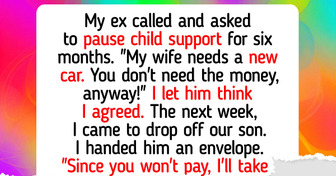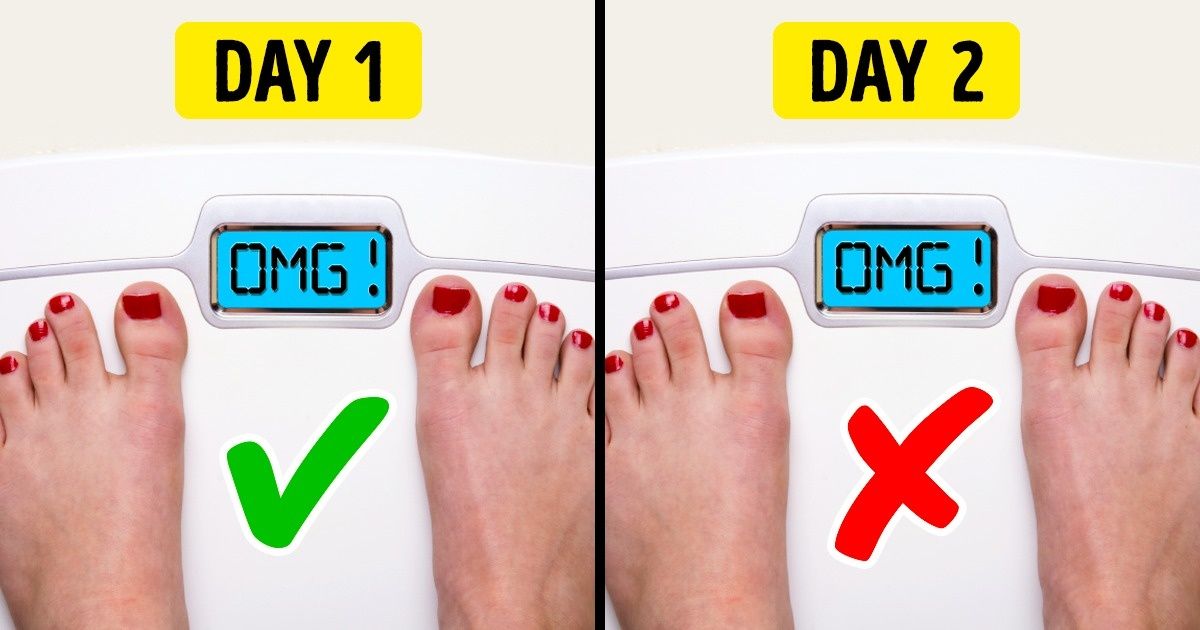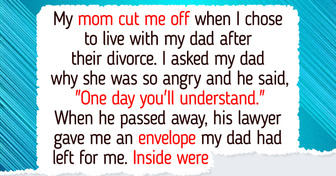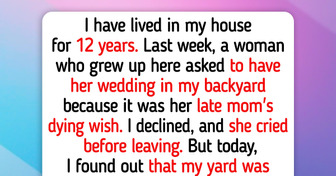My Ex Put His New Family Over Our Son, So I Served Him the Sweetest Revenge


Most people know that if you want to lose weight, you need to consume fewer calories and exercise on a regular basis. However, there’s much more to successful weight loss than just that. Among things you should do, there are also things you shouldn’t, and these mistakes can halt or even reverse your progress.
Here at Bright Side, we researched the most common weight-loss mistakes and wanted to share them with you.
Many packaged foods these days have healthy-sounding claims on the front of the package that fool you into believing they’re actually good for you. But if you check the nutrition label, you’ll see that most of those claims aren’t supported by any factual information. There is also a lot of sugar hiding among ingredients, often disguised as words ending with -ose: fructose, glucose, dextrose, maltose, and sucrose.
Another mistake you make when not reading labels is assuming that one package means one serving. Did you know that one serving of chips is only 13 to 16 chips? There’s definitely more than that in even the smallest bag.
Do this instead: always check the list of ingredients and the nutrition label on the back of the package, and don’t forget to take note of the serving size, as well. This way, you’ll make sure you only eat what you actually need.
While weighing yourself every day will not directly hinder weight loss, it can lead to a lot of frustration. It’s important to remember that healthy, successful weight loss is a slow process. The actual number on the scales can be affected by different reasons from day to day, for example, natural weight fluctuations during the menstrual cycle or gaining muscle through strength training. When you don’t see the results you want to see on the scales, you might get discouraged and binge eat, which could set your weight loss journey way back.
Do this instead: try using a tape measure around your waist, hips, and thighs to track your progress once a week. If you really need to weigh yourself to keep yourself motivated, do it no more than once a week or even once every 2 weeks.
You can safely say that some exercise is better than no exercise at all. But if you’ve been watching your diet, doing cardio, and leading an overall healthy lifestyle, yet your weight loss is not happening as fast as you think it should be, the reason might be a lack of strength training. Resistance training not only helps you build muscle, but it also boosts your metabolism and promotes belly fat loss.
Do this instead: combine cardio and resistance training for best results. You can do them on alternate days or even on the same day if you have enough time.
Do you know how much sugar your favorite drink order has? Most popular drinks have at least 40 g of sugar! This is 2-3 times as much as the maximum amount you should eat in a day — and that’s just from one drink! Soda, fruit juice, beer, and wine are also full of carbs and calories that can leave you hungry because the appetite centers in your brain don’t react to liquid calories the same way as they do to calories from food.
Do this instead: drink water! If you can’t stand the blandness of plain water, try adding lemon wedges, your favorite berries, or mint leaves to it to give it some taste. Unsweetened green tea is also a good beverage option.
Probably the most common mistake people make when trying to lose weight is skipping breakfast or dinner. It might seem logical at first: you think if you reduce your calorie intake this way, you’ll lose weight faster. However, skipping meals not only slows down your metabolism but it also makes you much more likely to snack and overeat later in the day.
Do this instead: make sure you eat a healthy, nutrient-rich breakfast that will give you energy and prevent you from eating too much later. The perfect breakfast combines good carbs with fiber and protein — oatmeal, eggs, and Greek yogurt with fruit are all good healthy-breakfast options.
Reducing portion sizes is one of the most common pieces of advice for people trying to lose weight. When done right, it really works. However, you should never eat portions so tiny that you’re constantly feeling hungry. First, it’s obviously unhealthy. And second, when your calorie intake is too low, your metabolism slows down in trying to preserve limited energy, making it harder for you to lose weight.
Another mistake connected to restrictions is cutting out your favorite “bad” foods completely. This usually leads to serious cravings and to satisfy those cravings, you either eat too much of other foods or, if you restrict yourself for too long, end up gorging on your favorite “forbidden” treats and giving up on your diet altogether.
Do this instead: eat sensible-sized portions that will satiate you but won’t make you feel too full. Allow yourself a cheat meal once in a while. 1-2 cheat meals a week will help you deal with your cravings while allowing you to stay on track with your diet.
Low-fat and fat-free foods are usually promoted as healthy-eating options — and many people believe this. What they don’t know is that these foods are often loaded with sugar and other additives to improve their taste. For example, a fat-free flavored drinking yogurt can contain as much sugar as a chocolate bar! Surely, that yogurt doesn’t seem all that healthy anymore, does it?
Do this instead: choose minimally processed and unprocessed whole foods — both those that are naturally low in fat and those that contain healthy fats. If you must buy something low-fat or fat-free, read the nutrition label to make sure the product isn’t loaded with sugar or additives and is actually lower in calories than its full-fat counterpart.
When you’re trying to lose weight, it’s important to incorporate enough fiber-rich foods into your diet. Soluble fiber is especially helpful since it absorbs water and turns to gel, which moves slowly through your digestive system and makes you feel full longer. Fiber is also known to slow fat absorption, as well as keep blood sugar levels in check, both of which help your body store less fat.
Do this instead: eat a fiber-rich diet. Oatmeal, nuts, peeled fruits, and beans are high in soluble fiber, while whole grains, brown rice, leafy vegetables, and fruit skins are good sources of insoluble fiber.
Setting realistic, long-term goals for weight loss is a must. It’s understandable you want to lose as much as you can and do it as quickly as possible, but that can only be achieved through crash-dieting, which is neither good for your health nor helpful in maintaining your weight after weight loss since you’ll gain it all back after your diet ends. Having realistic expectations and understanding that weight loss is a gradual process will help you stay on track and not get discouraged.
Do this instead: adjust your expectations to a more realistic goal. For best long-term results, aim to lose one to 2 pounds a week.
It’s easy to overeat healthy foods — you know they’re good for you, so you think a bigger portion won’t hurt. However, despite their healthy status, they can still lead to weight gain. Calories are still calories (and excess calories mean excess weight), even if they come from nutrient-rich whole foods, and foods like nuts, avocado, hummus, quinoa and brown rice are pretty high in calories to begin with.
Do this instead: look up single servings of healthy foods and stick to them. A single serving of avocado, for example, is 1/3 of a whole avocado. It’s fine to eat more than that, but it is necessary to keep the serving size in mind.
Did you find any of these mistakes surprising? Do you know other mistakes or do you have some diet tips that aren’t mentioned here? Feel free to share your experience with us in the comments!











